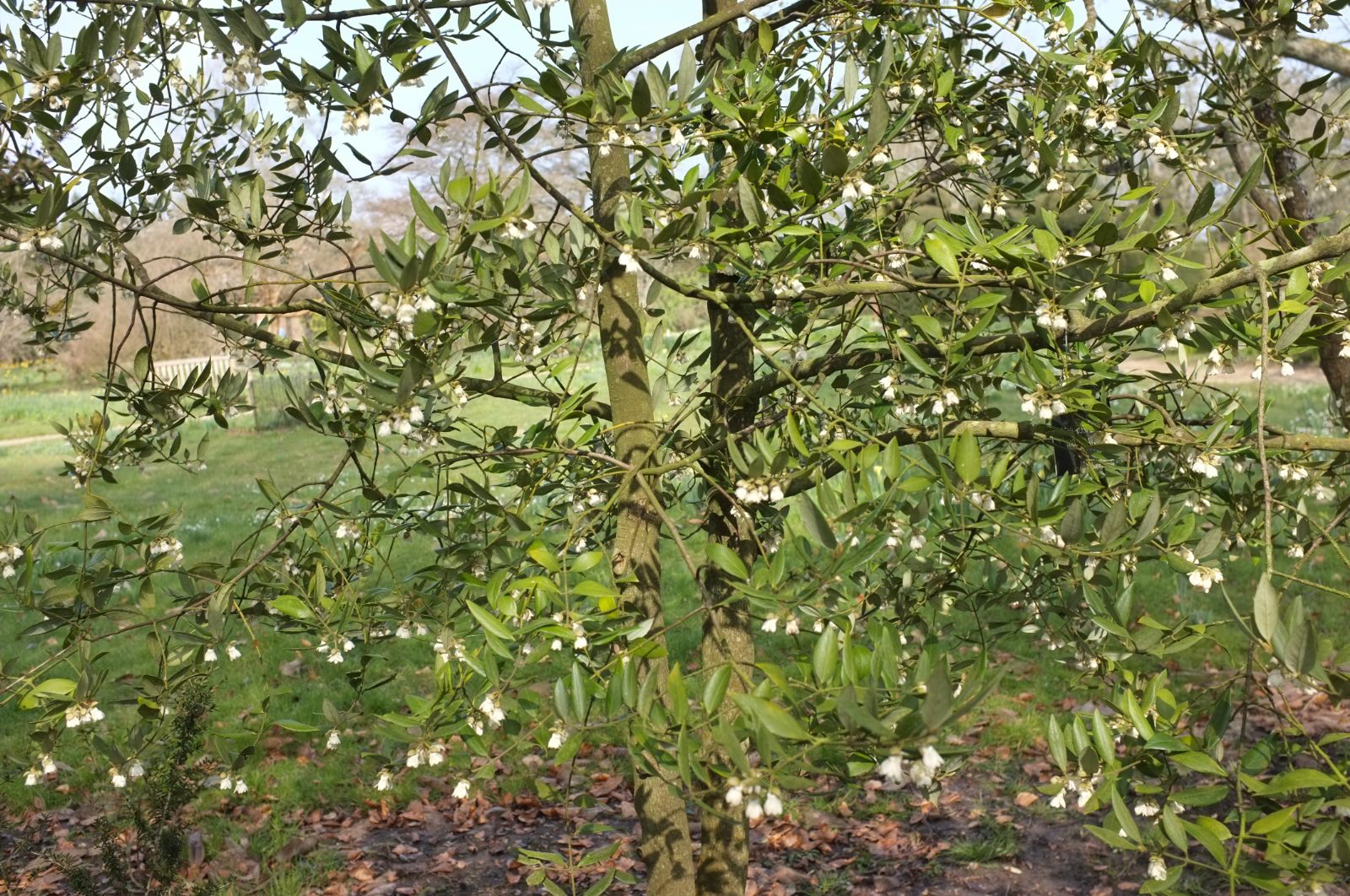Atherosperma moschatum
Credits
Article from Bean's Trees and Shrubs Hardy in the British Isles
Recommended citation
'Atherosperma moschatum' from the website Trees and Shrubs Online (treesandshrubsonline.
Genus
Common Names
- Black Sassafras
Other taxa in genus
An evergreen tree to 100 ft high in the wild state, aromatic in all its parts. Leaves opposite, narrowly elliptic to lanceolate, 2 to 3 in. long, leathery, dark green above, greyish and glabrous or silky-hairy beneath, margins entire or with a few teeth. Flowers dioecious, creamy white, about 1 in. across with seven to ten tepals, borne singly in the leaf-axils; receptacle concave, silky-hairy inside and out; male flowers with about fifteen stamens; female flowers with several whorls of staminodes and numerous free pistils, each developing into a one-seeded fruit (achene). Bot. Mag., n.s., t. 43.
Native of the temperate forests of Tasmania and S.E. Australia; introduced in 1824 and again by Comber in 1929. Although not common in cultivation, it is fairly hardy in a sheltered place. A specimen in woodland at the Edinburgh Botanic Garden is about 10 ft tall and flowers every year. At Caerhays Castle, Cornwall, it has reached 20 ft and there is another large specimen at Trewithen in the same county.






